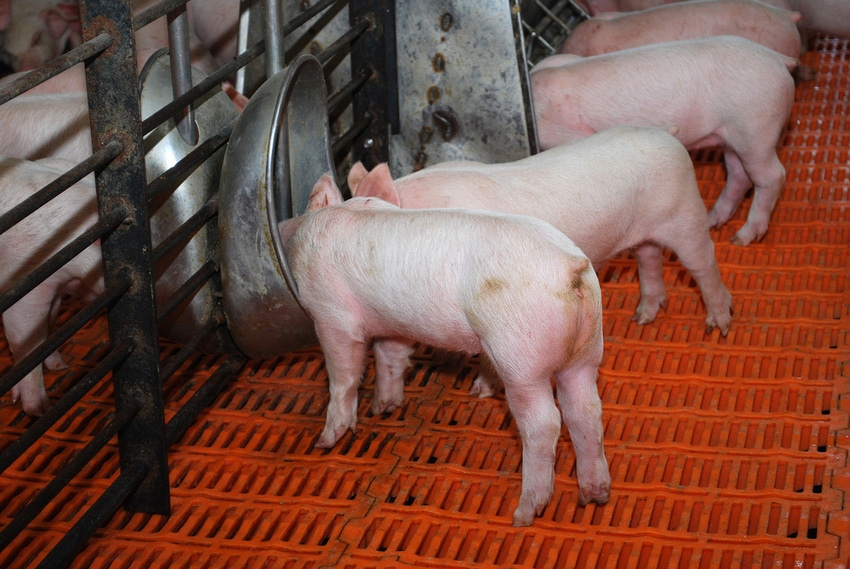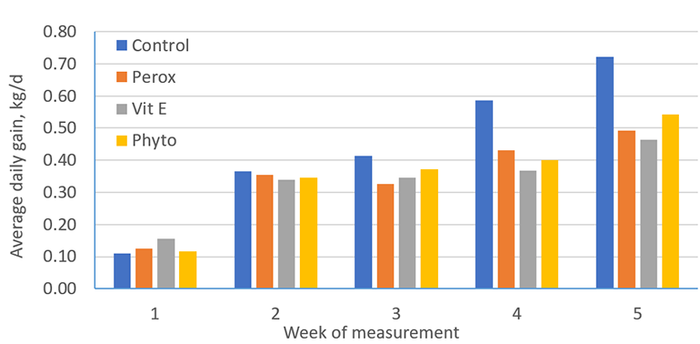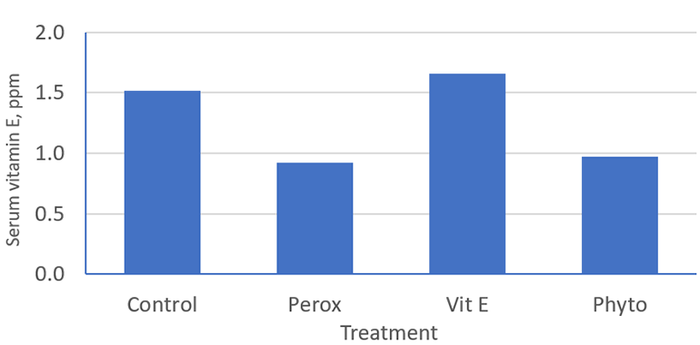Monitor peroxidized-lipid intake in nursery piglets
Vitamin E and phytogenic compounds derived from plants are natural antioxidants which can reduce the impact of oxidation and may protect from damage induced by peroxidized lipids.
April 4, 2019

By Eric van Heugten and Ysenia Silva-Guillen, North Carolina State University Department of Animal Science
Restaurants use vegetables oils in the preparation of fried foods and these oils are heated repeatedly at high temperatures. These conditions stimulate the progressive peroxidation of lipids, resulting in numerous unstable and toxic compounds. This has major implications for human nutrition, but also for animal nutrition because spent fryer oils are commonly recycled into livestock diets.
Peroxidized lipids induce oxidative stress, impair antioxidant systems and cause intestinal dysfunction. Vitamin E and phytogenic compounds derived from plants are natural antioxidants which can reduce the impact of oxidation and may protect from damage induced by peroxidized lipids.
We conducted a study to evaluate supplementation of vitamin E and phytogenic compounds through the drinking water on growth performance and oxidative stress of newly weaned piglets fed diets containing peroxidized lipids. We used a total of 96 pigs, weaned at 21 days of age in a 35-day nursery study. Pigs were grouped by sex and body weight blocks and randomly allocated within blocks to one of four dietary treatments. Pigs were housed four pigs per pen, using 24 pens and eight replications per treatment. Treatment diets contained either 6% human-grade soybean oil or 6% of the same soybean oil that was peroxidized for 12 days at 80 degrees C while bubbling air through the oil at 50 liters per minute.
Peroxidation resulted in significant deterioration of the oil as evidenced by increased markers of peroxidation (Table 1). Pigs fed peroxidized oil received drinking water without (control water) or with supplemental vitamin E (100 IU/L of d-α-tocopherol) or a commercial phytogenic product. Pigs fed the control soybean oil diet received control water only.

Feeding peroxidized oil decreased body weight (P<0.001) when measured on Day 28 and 35 by 11% and 16%, respectively. Average daily gain was decreased (P < 0.03) when peroxidized lipids were fed during week 3, 4 and 5, but not during week 1 or 2 (Figure 1), indicating that the negative impact of peroxidation may take time to manifest itself, or that the complex Phase 1 diet may have provided some protection compared to the Phase 2 diet.

Part of the reduction in average daily gain could be explained by reduced feed intake, although this was only significant during Week 5 (P=0.04). Feed efficiency was compromised by peroxidized lipids during week 4 and 5, resulting in an overall reduction in gain:feed of 9.8% (645 versus 715 grams per kilogram, for peroxidized versus control lipid diets, respectively). Supplementation of vitamin E or phytogenic compounds in the drinking water of pigs fed peroxidized lipids did not improve growth, feed consumption or feed efficiency.
Peroxidized lipids decreased serum vitamin E concentrations (P=0.03) which were restored to control levels (P=0.01) by vitamin E in the drinking water, but not by supplementation of phytogenics (Figure 2). Serum malondialdehyde (marker of lipid peroxidation), protein carbonyl (marker of protein oxidation), and total antioxidant capacity were not impacted by treatments, but serum 8-hydroxydeoxyguanosine (marker of oxidative DNA damage) was reduced with feeding of peroxidized lipids and this was not altered by supplemental antioxidants in the drinking water.

Results from this experiment demonstrate that feeding peroxidized lipids clearly reduced body weight, daily weight gain and feed efficiency, which is consistent with our previous research studies. The negative effects of peroxidized lipids could not be improved by vitamin E or phytogenics supplemented in the drinking water. The quality of lipids for nursery pig diets should be carefully monitored to ensure optimal production performance.
Source: Eric van Heugten and Ysenia Silva-Guillen, who are solely responsible for the information provided, and wholly owns the information. Informa Business Media and all its subsidiaries are not responsible for any of the content contained in this information asset.
You May Also Like



